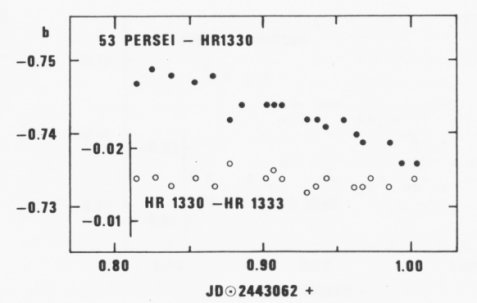
 |
The prototype of the Slowy Pulsatating B Stars, 53 Persei (represented by the black dots), fades by a bit over a hundredth of a magnitude during the night of October 10, 1976. The "b" on the left-hand axis stands for "blue magnitude" (the brightness of the star in blue light). The open circles represent a comparison star whose close constancy shows the variation of 53 Per to be real. The lower axis gives the Julian Date, the number of days past January 1, 4317 BC of the Julian Calendar. (From an article in the Astonomical Journal by J. R. Percy and M. C. Lane.) |